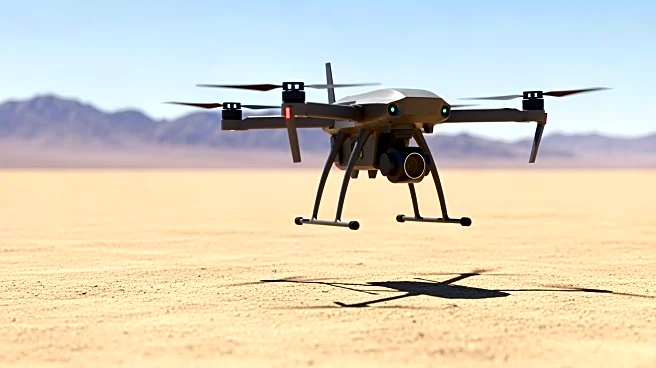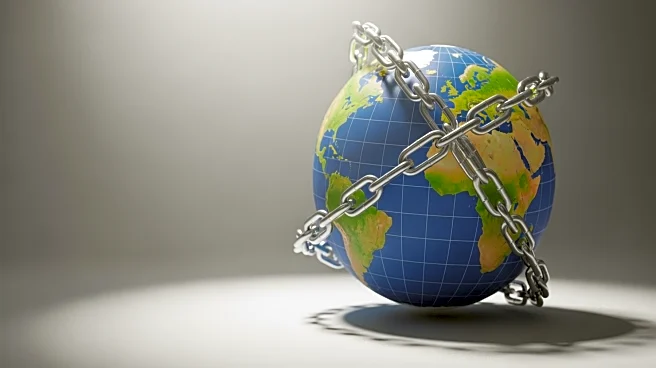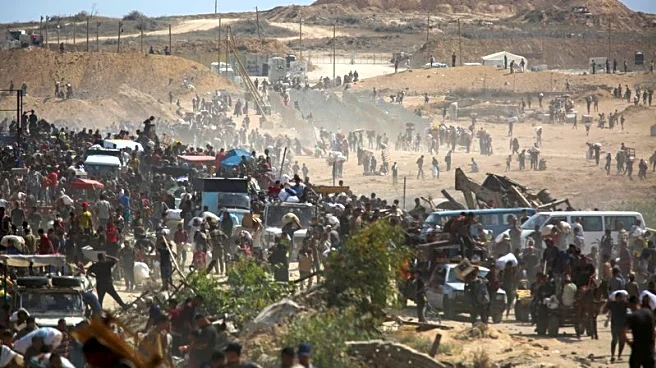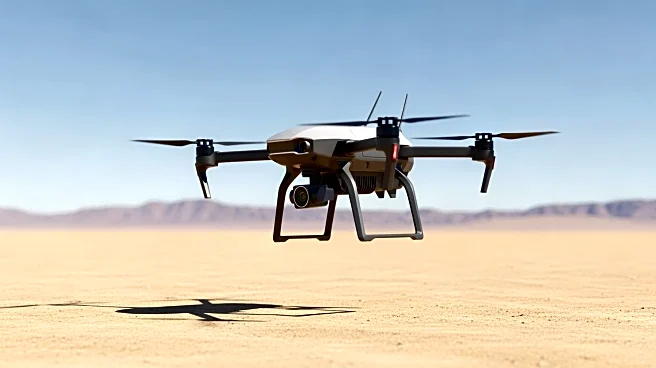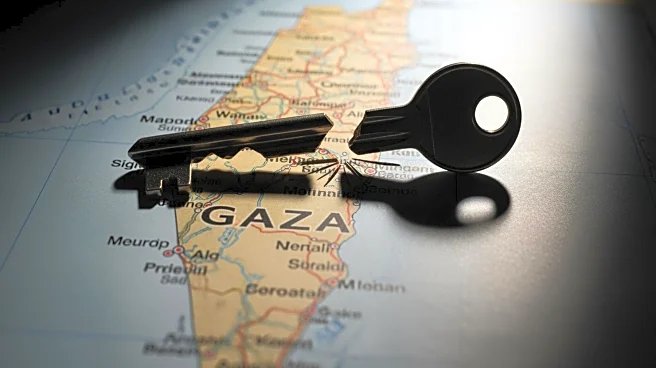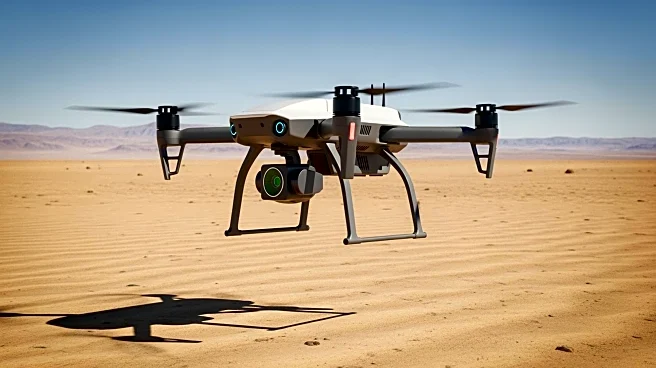What's Happening?
The United States is evaluating a new aid plan for Gaza that aims to replace the current operations of the Gaza Humanitarian Foundation (GHF). The funding for the US-backed GHF is set to continue until the end of November, after which the new plan is expected
to be implemented. This development comes amid ongoing efforts to provide humanitarian aid and support to displaced Gazans, who have been receiving food parcels and supplies from GHF distribution points, such as the Netzarim corridor in central Gaza. The initiative is part of broader efforts to secure long-term stability in the region following a ceasefire.
Why It's Important?
The potential shift in the US aid strategy for Gaza is significant as it could reshape the humanitarian landscape in the region. The current operations of the GHF have been crucial in providing essential services to displaced individuals, and any changes could impact the delivery of aid. The new plan may address previous controversies associated with the GHF, potentially improving the efficiency and effectiveness of aid distribution. This move could also influence US relations with regional stakeholders and international organizations involved in humanitarian efforts, such as the UN Relief and Works Agency.
What's Next?
As the US considers implementing the new aid plan, stakeholders are likely to monitor its impact on humanitarian operations in Gaza closely. The transition may involve coordination with local and international agencies to ensure a seamless shift in aid delivery. Political leaders and humanitarian organizations may react to the changes, advocating for continued support and resources to address the needs of displaced populations. The success of the new plan will depend on its ability to enhance aid distribution while maintaining stability in the region.
Beyond the Headlines
The restructuring of aid operations in Gaza could have deeper implications for US foreign policy and its role in Middle Eastern humanitarian efforts. Ethical considerations regarding the distribution of aid and the involvement of various stakeholders may arise, prompting discussions on the best approaches to support vulnerable populations. Long-term shifts in humanitarian strategies could influence future US engagements in conflict zones, emphasizing sustainable and effective aid solutions.


